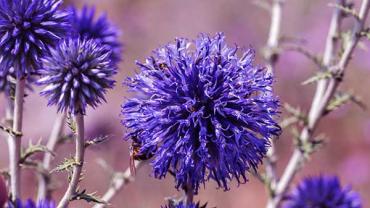
The liver is the largest organ in the body, with crucial functions including detoxification, nutrient metabolism and storage, blood sugar regulation, and immune support. Perfused by both the portal vein and the hepatic artery, the liver is responsible for the journey of all carbohydrates, lipids, amino acids, ammonia, vitamins and minerals, and hormones throughout the body. (And don’t forget ketone production, something of growing interest in the functional medicine community.) With roles that can literally determine life or death, the health of the liver is paramount. But far too often, this vital organ gets neglected until problems surface.
Liver injury is a serious condition and can be initiated by toxin exposure (of which drugs and alcohol are the most common), microorganisms and endotoxins (viruses, bacteria, fungi), oxidative stress, and systemic inflammation. Further, mounting evidence shows the gut-liver axis to be a strong communication system impacting liver health. Dysbiosis and increased gut permeability allow the portal vein to be infiltrated with lipopolysaccharides (LPS) and gut-derived toxins, leading to the production of inflammatory cytokines and, ultimately, hepatic inflammation and injury.
As we are exposed to an ever-growing amount of environmental, dietary, and pharmaceutical toxins, it’s more crucial than ever that we support the liver with fortifying nutraceuticals. Here’s a look at select botanical compounds with a proven track record for maintaining a healthy liver.
Milk Thistle (Silybum marianum)
An extraction of the seeds of milk thistle yields a compound that is 70 percent silymarin, the bioactive, hepatoprotective flavonoid in this botanical, which exerts both antioxidative and anti-inflammatory effects. It is the most studied medicinal herb for the treatment of non-alcoholic fatty liver disease (NAFLD) and steatohepatitis. By reducing the production of reactive oxygen species and lipid peroxidation through increasing endogenous concentrations of antioxidant enzymes such as glutathione peroxidase, glutathione reductase, superoxide dismutase and catalase, silymarin protects against oxidative stress. It exerts its anti-inflammatory roles by inhibiting nuclear transcription factor NFκB and reducing inflammatory cytokines in the hepatic parenchyma. It also prevents apoptosis of the hepatic stellate cells and stabilizes the cell membranes of hepatocytes, protecting them from toxic insult. A systematic review with meta-analysis on the effect of silymarin on ALT, AST and gamma glutamyl transpeptidase (γGT) levels in patients with liver diseases show the use of silymarin is associated with a reduction in serum levels of ALT and AST
Dandelion Root (Taraxacum officinalis)
The water-soluble polysaccharides of dandelion root are well known for their hepatoprotective qualities. The anti-inflammatory and antioxidative bioactive components include sesquiterpene lactones, taraxasterol, taraxerol, chlorogenic acid and chicoric acid. Dandelion is particularly useful in supporting liver-driven glucose metabolism, and therefore, has been studied in the context of type 2 diabetes. Insulin resistance leads to dysregulation of liver cells from dysfunctional transportation of glucose and abnormal storage of lipids. In mouse studies, dandelion extract has reduced serum glucose, cholesterol, and triglyceride levels, possibly through the elevation of adenosine monophosphate-activated protein kinase (AMPK) in the liver, with a significant fall in lipid accumulation and improvement in insulin sensitivity. However, reducing oxidative stress in hepatocytes also reduces cholesterol associated with diabetes, and chlorogenic acid from dandelion inhibits oxidative stress in the liver.
Licorice (Glycyrrhiza glabra)
Licorice is another well-established hepatoprotective botanical. An in vitro study evaluating the hepatoprotective effects of three species of medicinal licorice on human liver carcinoma (HepG2) cells found that cell viability improved from 53.5 percent to up to 80 percent, suggesting the presence of bioactive and hepatoprotective compounds in licorice. In another study evaluating the effect of licorice on chronic alcohol-induced fatty liver injury mediated by inflammation and oxidative stress, mice were fed a liquid alcohol diet with or without licorice for 4 weeks. Alcohol consumption increased serum ALT, AST, triglycerides and tumor necrosis factor (TNF)-α while reducing glutathione, but these effects were mitigated by licorice.
Two primary means by which the liver is injured include oxidative stress and systemic inflammation. Milk thistle, dandelion root, and licorice are standard, liver-supporting botanicals containing potent hepatoprotective bioactive compounds that target these pathways and may help protect against liver damage.